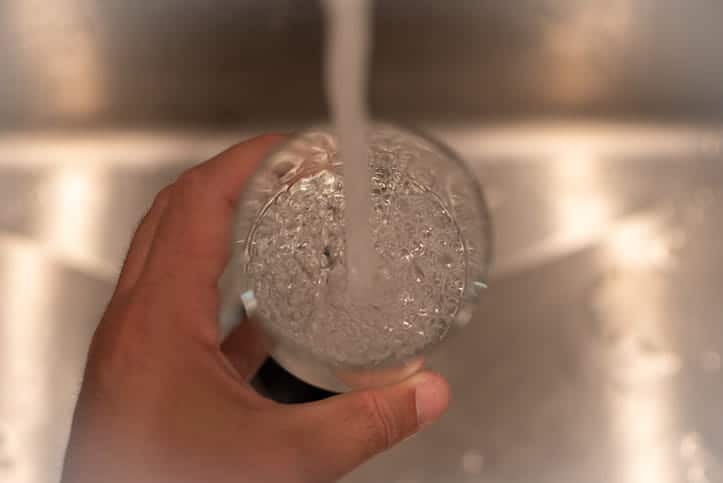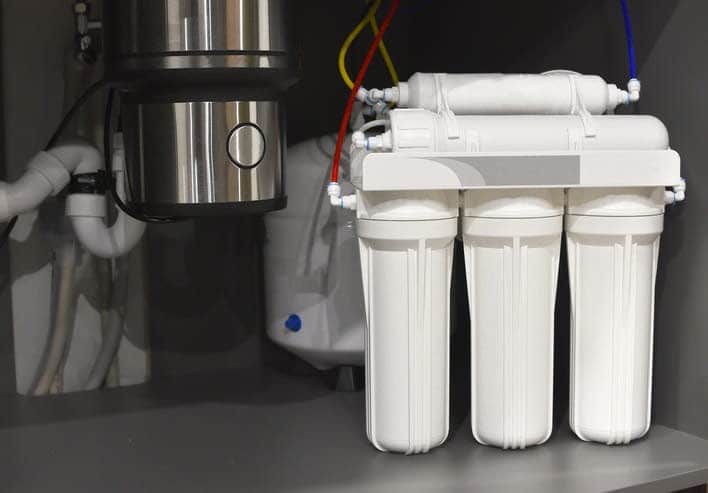
Plastic makes the world go round. Unfortunately, that same plastic is to blame for the harmful microplastics found in virtually every waterway in the nation. These contaminated waterways eventually feed into our water sources and oceans, posing a dangerous threat to the environment, wildlife, and humans.
But what exactly are microplastics, and what do you need to know about how they impact your everyday water usage? Let’s get into the nitty-gritty about how you may come into contact with microplastics in your daily water usage and what you can do about it.
At Rain Water Conditioning of Las Vegas, our techs are committed to bringing you the cleanest water for your residential and business needs. Is your water as clean as you think? Find out today.
The problems with microplastics
Microplastics are more than just a nuisance. They pose a real threat to our environment and our health. A recent study found that 3 million tons of microplastics are released annually into the global environment. These microplastics are in addition to the 5.3 million tons of larger plastic waste that litter our Earth.
As the name suggests, microplastics are small pieces of plastic anywhere from 5 mm long to smaller, nearly microscopic units. Unlike biodegradable waste, plastic waste does not break down as easily or as quickly as other natural elements.
When plastic breaks down into microplastic, these contaminants can find their way into public waterways, feeding to public sources like Las Vegas’ primary water source, the Colorado River.
The effects of microplastics in our waterways are many and include concerns like:
- Contaminate the environment, including waterways
- It can be ingested by a wide range of animals
- They can cause harmful health effects in humans when ingested, especially when these microplastics have toxic chemicals attached to them
- Are linked to degenerative brain diseases, including dementia, Alzheimer’s, and Parkinson’s
Microplastics in water systems
One of the biggest concerns of microplastics is their prevalence in waterways. Microplastics can come from a variety of products, including cosmetics, cookware, or clothing. When these microplastics end up in waterways, they threaten the wildlife that consumes the water, the aquatic systems that pump water into cities and towns, and eventually, the humans that use the water for everyday activities like drinking, cooking, and cleaning.
Las Vegas drinking water is sourced from the Colorado River and Lake Mead. When the snow from the Rocky Mountains melts, it makes its way into the Valley’s water source, from which Las Vegas eventually pulls its water from.
A recent study published by the National Institute of Health found that Lake Mead tested positive for microplastics. Microplastic concentration from a sample collected in 2017 and 2018 measured out to 0.44 — 9.7 particles/cubic meter at the water surface and 87.5 — 1,010 particles/kilogram dry weight (kg dw) at the sediment surface.
The dangers of microplastics in drinking water
The concern with microplastics in the water is not so much the plastic itself but any harmful chemicals used in or absorbed by the plastic. For example, microplastics can absorb chemicals, including polychlorinated biphenyls (PCBs), heavy metals, and pesticides. Once these toxic chemicals are attached to a microplastic, and the microplastic makes its way into an animal or human, it can leach out these toxic chemicals and create a host of health issues.
While much is not known about microplastics and their harmful effects, microplastics have been connected to health issues, including:
- Possible increased risk of cancer
- A weakened immune system
- Reproductive health issues
Is bottled water free from microplastics?
Knowing that microplastics impact the environment and the nation’s overall water system, many people are surprised that even bottled water is not free from microplastics. A Canadian study found that those who drink bottled water ingest 90,000 more particles of plastic each year than individuals who drink water from a tap (those drinkers only consume 4,000 particles of water per year).
This can be credited to the extensive water filtration processes townships have in place when sourcing and filtering their water.
For many residents, especially those throughout Las Vegas, supplementing your water with a home water filtration system is another layer of defense against microplastics. Water filtration systems such as reverse osmosis water filters are incredibly effective at pulling out harmful toxins, chemicals, viruses, and bacteria through their semi-permeable membranes.
Installing a home filtration system also eliminates the need for plastic water bottles, which brings its own issues of plastic environmental contamination.
Experience the quality of filtered water with a reverse osmosis water system at Rain Water Conditioning of Las Vegas.
Explore our home filtration systems
A home filtration unit can significantly reduce the amount of microplastics in your water. A recent study highlights that a quality water filtration system can reduce up to 90% of microplastics in your water.
At Rain Water Conditioning of Las Vegas, we are proud to offer various solutions to help you get clean, filtered water free of harmful microplastics. We offer two popular types of filtration systems: reverse osmosis systems and Alkaline water reverse osmosis systems.
Both systems work in similar manners as they help effectively pull out toxins and contaminants in the water. However, an alkaline water reverse osmosis system keeps from removing some of those essential minerals you need.

Call Rain Water Conditioning of Las Vegas today
Learn more about our available home water filtration systems when you contact the team at Rain Water Conditioning of Las Vegas.
See how our team can help you get the best quality water for your home. Explore our available filtration systems and taste the difference of having high-quality, filtered water. Get in touch today to learn more.
Sources:
Baldwin, A., et al. (2020). Microplastics in Lake Mead National Recreation Area, USA: Occurrence and biological uptake.
Cherian, A., et al. (2023). Microplastic Removal from Drinking Water Using Point-of-Use Devices.
Microplastics from textiles: towards a circular economy for textiles in Europe. (2022).
Tags: Choosing the Right Water Filtration System, microplastics, Reverse Osmosis Systems, Water Filtration Systems in Las Vegas